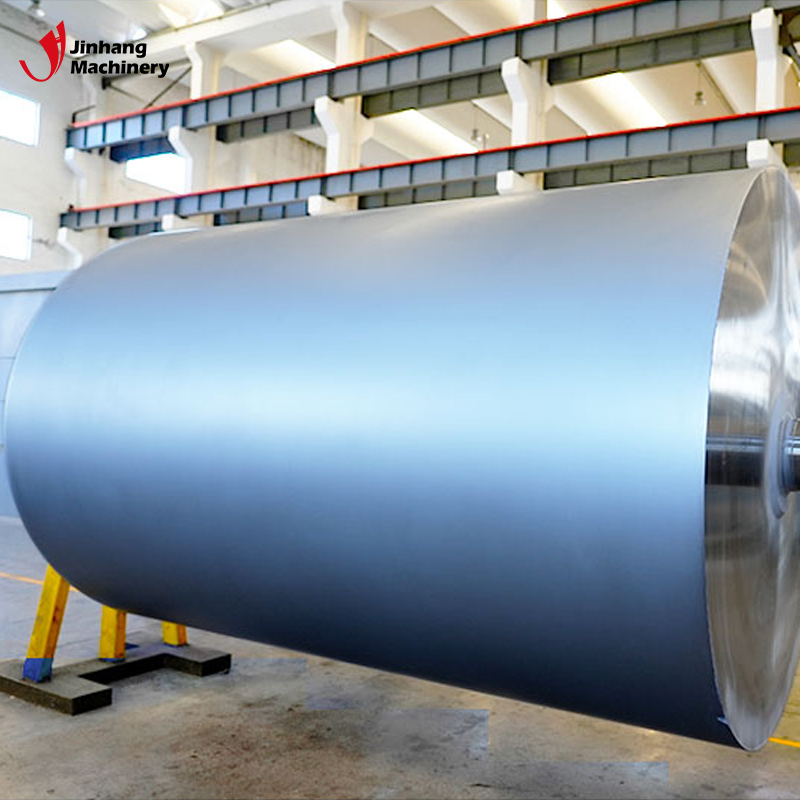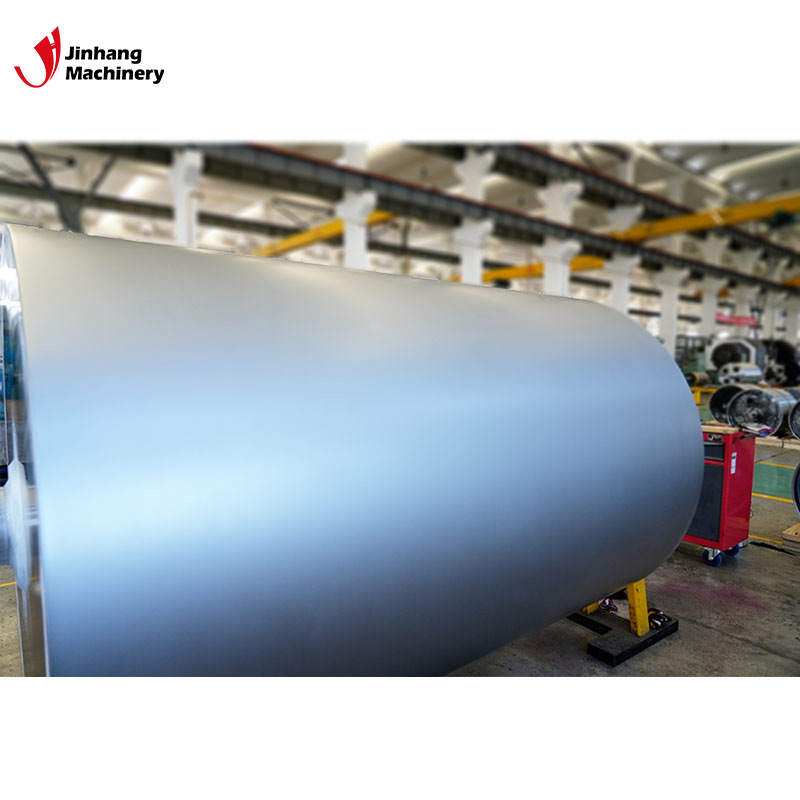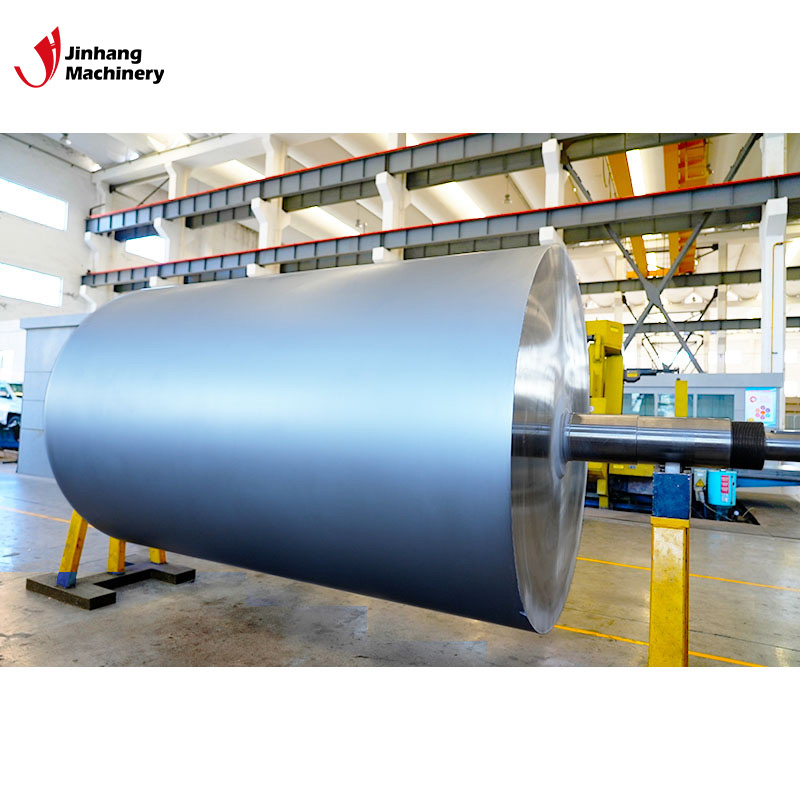Why does the steel industry need water quenching rollers?
During the production process of the steel industry, precise temperature control and rapid cooling processes are required to ensure the strength, durability and other key properties of the finished product. In the process of steel forming and processing, water quenching rollers have become an indispensable tool. The core function of water quenching rollers is to quickly cool down the steel after forming through an efficient cooling system to ensure that it meets high quality standards in various indicators. So, why are water quenching rollers so critical? What is its specific role?
This article will explore the principle, cooling mechanism, materials used, and key role of water quenching rollers in steel production.

1. What is the basic principle of water quenching rollers?
What is a water quenching roller?
As the name suggests, a water quenching roller is a roller device that quickly cools high-temperature metals through a water quenching process. After high-temperature forming, the internal structure of steel products is in an unstable state. If they are not cooled quickly, they will deform and reduce their strength. The special structure of the water quenching roller enables it to accurately cool down the steel when it passes through the roller, quickly reducing the surface and internal temperature of the steel to the expected safe range to achieve high-quality production standards.
The cooling medium of the water quenching roller is usually water, because water has a large specific heat capacity and can absorb a large amount of heat in a short time, thereby effectively completing the rapid cooling of the steel. In addition, the cooling effect of the water quenching roller can also be precisely controlled by adjusting parameters such as water flow, roller speed and pressure.
How is the principle of the water quenching roller achieved?
The water quenching roller mainly achieves rapid cooling through the outer water cooling structure. When the hot steel passes through the roller, the inner and outer layer structures of the roller will form a heat conduction path to transfer the high temperature of the steel to the water cooling system. The water flow quickly takes away the temperature of the steel, thereby quickly cooling the surface and inside of the steel. At the same time, the cooling system of the water quenching roller can also reduce the precipitation of metal components and avoid the formation of uneven components or physical defects.
2. What is the role of water quenching rollers in steel production?
Why can't the steel industry do without water quenching rollers?
The role of water quenching rollers in steel production is not only cooling, but also related to the quality stability and production efficiency of steel. The strength, toughness and wear resistance of steel in the steel industry are closely related to its cooling speed. If the cooling speed is too slow, the microstructure of the steel will change, resulting in unstable performance. The high-speed cooling system of the water quenching roller can significantly improve the surface hardness and internal density of the steel, which is one of the reasons why the steel industry cannot do without water quenching rollers.
During the production process, water quenching rollers can also reduce the wear of high-temperature steel on production line equipment. Due to the huge heat brought by high-temperature steel, if it is not controlled, it will not only reduce the service life of production line equipment, but also reduce production efficiency. Water quenching rollers can reduce equipment heat loss by rapidly cooling down, which helps to improve the operation stability of the production line.
How do water quenching rollers improve the strength and toughness of steel?
The strength and toughness of steel depend largely on its microstructure and grain size. Water quenching rollers can refine the grain structure of steel through a rapid cooling process, thereby improving its strength and toughness. When the high-temperature steel is cooled by the water quenching roller, the grain structure of the metal changes, forming a fine and uniform grain distribution, which makes the steel have higher compressive and tensile strength.
In addition, the water quenching roller can also inhibit the coarsening of the grains during the cooling process of the steel, maintain the toughness and ductility of the steel, and ensure that it has a longer life and higher reliability in use.

3. What are the cooling mechanisms of the water quenching roller?
How is the cooling method of the water quenching roller designed?
The cooling system of the water quenching roller usually adopts a built-in water flow channel or an external spray device to ensure that the steel can be cooled quickly. The built-in water flow channel structure sets up multiple water channels inside the roller. When the water flows through the roller, it takes away the heat, thereby achieving a cooling effect. The external spray device quickly reduces the roller surface temperature to a safe range through water jets, so that the steel is cooled evenly.
In addition, the cooling method of the water quenching roller can also control the cooling effect by adjusting the water flow rate and water temperature. According to different steel types and production process requirements, the water flow rate and water temperature will be dynamically adjusted to ensure that the cooling effect meets production requirements. Some high-precision water quenching rollers will also be equipped with a temperature monitoring system to achieve real-time monitoring of the cooling process.
How to control the cooling speed of water quenching rollers?
The cooling speed of water quenching rollers is mainly controlled by adjusting the water flow, roller speed and pressure. The water flow directly affects the cooling rate. Generally, the larger the water flow, the faster the cooling speed. At the same time, the roller speed will also affect the cooling effect. High speed can allow steel to pass through the cooling area faster, while lower speed can extend the cooling time and make the steel reach a more ideal temperature.
During the production process, the cooling speed is also controlled by adjusting the water pressure. High-pressure water flow can improve cooling efficiency and is suitable for rapid cooling occasions, while low-pressure water flow is suitable for application environments that require precise temperature control.
4. What are the considerations for water quenching roller material selection?
How does the material of water quenching roller affect the cooling effect?
The material selection of water quenching rollers directly affects its cooling effect and service life. Since it needs to be used in a high temperature environment, the roller material must have excellent thermal conductivity, heat resistance and wear resistance. Usually, the material of the water-quenched roller is mostly high-strength alloy steel or special heat-resistant cast iron, which can withstand the high temperature erosion of steel and effectively transfer heat to the cooling water.
High-strength alloy steel has excellent thermal conductivity and wear resistance, and is one of the ideal materials for water-quenched rollers. It can not only quickly transfer the heat of steel to the cooling water, but also maintain a low wear rate during long-term use, thereby extending the service life of the roller.
Do water-quenched rollers require surface treatment?
In order to further improve the durability of water-quenched rollers, the roller surface is usually subjected to special surface treatments, such as chrome plating and nitriding. These surface treatment technologies can increase the hardness and corrosion resistance of the roller, so that it can still maintain stable performance in high temperature and high humidity environments. Chrome-plated rollers are not only wear-resistant, but also have anti-oxidation properties, while nitriding can enhance the surface hardness of the roller and improve cooling efficiency.

5. How do water-quenched rollers play an important role in steel production?
How does the water quenching roller ensure the stability of steel?
The temperature changes greatly during the steel production process, and temperature fluctuations will affect the organizational structure and quality of the steel. The water quenching roller uses a precise temperature control system to quickly cool the steel after forming, ensuring that its grain structure and physical properties remain stable. During the cooling process, the water quenching roller can also reduce the risk of surface oxidation of the steel, so that the steel has better stability and surface finish in subsequent processing links.
How to improve production efficiency through water quenching rollers?
The rapid cooling mechanism of the water quenching roller can greatly shorten the cooling time of the steel, avoid the process delay problem existing in the traditional cooling method, and improve the continuity and efficiency of steel production. In addition, the cooling efficiency of the water quenching roller enables the production line to run faster, thereby increasing the output of steel per unit time and improving production efficiency.
In summary, the water quenching roller plays an indispensable role in the steel industry. Its efficient cooling mechanism and excellent performance ensure the quality of steel and the stability of the production line. Through reasonable material selection, scientific design and precise control, the importance of water-quenched rollers in steel production has been further highlighted, becoming one of the key equipment for the steel industry to achieve efficient and high-quality production.
